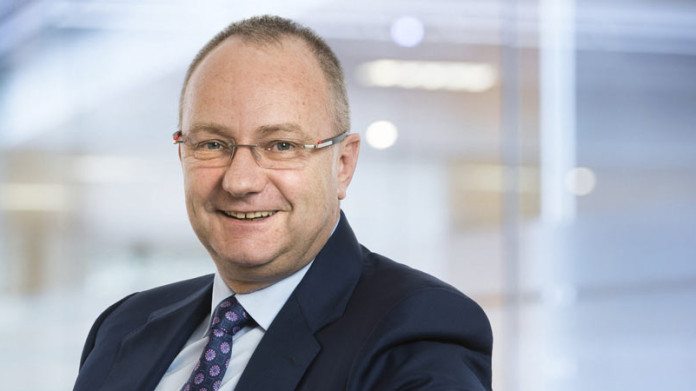
ADVANCES in South Africa’s mining regulatory and policy environment have been widely acknowledged, especially at this year’s Mining Indaba conference in Cape Town, demonstrated by the appearance of President Cyril Ramaphosa.
His speech to the conference delivered a message of catharsis and redemption. For instance, the ‘Original Sin” of colonialism – the historical theft of land – would be addressed in equal measure with prosecution of those involved in State Capture.
He then took questions.
Interestingly, one was posed by none other than Anglo American CEO, Mark Cutifani. It’s not often conversations between leading business and high-ranking politicians are given a public airing, even if this encounter was somewhat ‘stagey’ in feel. Nevertheless, Cutifani asked Ramaphosa if “a share vision” between labour, government and business regarding “various commodities” in specific provinces could be achieved?
In fact, the exact question ran:
“Mr President, the resolution of the Mining Charter last year sets a bedrock on which South Africa can start to rebuild its mining industry. Growth in the industry can contribute significantly to GDP growth and support the creation of jobs. To achieve this, new mines have to be significantly different from those of the past; they need to take account of deeper, lower grade ores; new technologies; modern environmental and legal frameworks; and new ways of work.”
“Would you support an initiative to create a shared vision for various commodities and mining regions in South Africa developed by industry, government, communities and labour—to bring new investment in the mining sector?”
“I’ll send a memo,” Ramaphosa replied, in jocular fashion; though it seemed clear he’d gotten the message.
The question is worth pondering, however, as it seems to move the discussion beyond the Mining Charter (about which there are still one or two major questions). Instead, Cutifani seems to be asking if South Africa can entirely modernise its investment case in order to accommodate all the challenges in the way of new mining investment.
Asked for clarity on his question following Anglo’s year-end results presentation, Cutifani told Miningmx he had met with Ramaphosa at the Indaba, as well as the mines minister, Gwede Mantashe and Pravin Gordhan, minister of public enterprises, regarding ways Anglo could isolate and resolve particular problems related issues such as downstream platinum usage in a way that could support new mine investment. Other issues on the agenda were how Anglo could support Eskom with coal (even though it has sold its domestic coal mines), and improving infrastructure, again in a way that could support fresh investment.
Efforts to create industrial demand for platinum is especially germane at present for Anglo American Platinum (Amplats), the Anglo subsidiary. Amplats has already announced an investment some $100m, a sum which is being match by the Public Investment Corporation, into a fund to develop downstream platinum demand.
“It was about creating demand and improving infrastructure through assets that are grouped together,” said Cutifani. “We saw the president and it was to align strategies with local communities. This talks to the country’s industrial policies. But we also need labour under the tent,” he added – a comment that seems apposite considering the wave of strike action currently contemplated by the Association of Mineworkers & Construction Union.
How this new compact might materialise is still to be decided. “It’s a very broad proposal,” Cutifani acknkowledged.
Anglo American SA deputy chairman, Norman Mbazima, told Miningmx that Anglo’s approach was really about creating a business climate in which new mines could be built.
“Our view is that the Mining Charter was great for existing mines, but there is still some work to be done for the new mines to happen,” he said. “You can read it [Cutifani’s question] in the light of that. The question is that we can talk about new mines, but it’s all in the abstract. That’s because people don’t really know.
“The next investments that are coming have to be very different, and so people must say what does that mean for, by way of example, Limpopo province? Will there be new PGM [platinum group metal] mines, or are they going to be in a different commodity? And what is needed to incentivise for that to happen? Only when we can visualise the future, can we be motivated to build new mines”.
During an interview at the Mining Indaba, Mining asked Cutifani whether the Department of Mineral Resources had done enough for South Africa to compete for some $1bn in new capital Anglo allocates annually? “No,” he answered. “South Africa is in a substantially better place, but it is not there yet,” he said.
Mbazima said South African mining needs to start moving in the same direction as that created by French group Total’s announcement that it had found world class resources of gas offshore the Cape peninsula near Mossel Bay. The resource has become tangible but “… what is required to make it happen?”, he said.
“I would like to develop that type of feeling about the mining industry. It has to come down to being more tangible,” said Mbazima. “Do we have the institutional capacity? Well, if we have the will and authority, we can find the capacity even if it’s in the private sector; just so long as have the authority.
“I don’t know what incentives are needed. This is still visionary thinking,” he said. “I can’t be on record to say we are going to do this, or that Anglo is going to do that, but it’s part of our thinking. We are big in the mining industry and we have got to be the one that continues to think through things,” he said.










